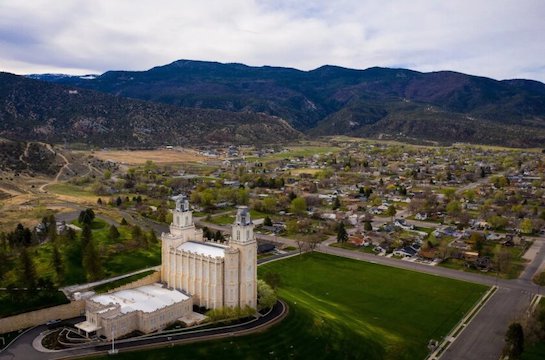Manti, Utah
Manti, Utah, was one of the first settlements in the Utah Territory.
Early leaders of The Church of Jesus Christ of Latter-day Saints planned a "Mormon Corridor" from Salt Lake City to the Pacific to facilitate further settlement. Settlers were sent “early to San Bernardino to establish the corridor's western point and in the first few years, settlements sprang up in Utah County, Nephi, Fillmore, Beaver, Cedar City, Parowan, Santa Clara and Las Vegas. Manti was found to be too far off the usual route to facilitate the corridor, but it was the fifth Utah colony, preceded only by Salt Lake City, Ogden, Bountiful and Provo.”[1]
Ute Indian Chief Walkara (Walker) invited Brigham Young to send settlers to "Sanpeetch" to teach his people to farm. Farming, however, was “a chafing lifestyle for most Indians, and Walker proved to be a ‘temperamental host.’"
The colonization of Manti was announced at the fall 1849 conference of the Church of Jesus Christ and among those called were Isaac Morley—who led the group—Seth Taft, Nelson Higgins, Charles Shumway, and George Washington Bradley. A group of 224 men, women, and children of primarily British stock left the Salt Lake Valley on October 28.
Arriving on November 19, they chose the Manti site because of a nearby warm spring, the extensive limestone quarries, and the fine farming and grazing lands nearby. In time, Manti became Utah’s breadbasket or granary.
The winter of 1849-1850 was severe, and the settlers literally dug into the southside of Temple Hill, creating shelters to wait out the winter. Morley selected the name Manti from the Book of Mormon, and Brigham Young approved.
Spring brought an infestation of rattlesnakes that had been hibernating in nearby caves. The settlers also faced a difficult relationship with Chief Walker and his people. The Latter-day Saint settlers built forts to protect themselves. The final fort was 3 feet wide at the base and 12 feet tall. The Big Fort enclosed nine square blocks.
A school was built in 1850 by George P. Billings. Brigham Young sent Phineas Cook to erect a gristmill. Other trades, such as blacksmiths, carpenters, millers, shoemakers, came to the town. And in 1853, a group of predominantly Danish settlers came to Manti. Other emigrants came from Switzerland, Norway, and Sweden.
Manti was part of the establishment of Sanpete County, created by the territorial legislature in 1850. Other towns in the county are Ephraim, Spring City, Mount Pleasant, Gunnison, Moroni, and Fairview.
Manti was incorporated in February 1851. The first mayor was Dan Jones, the so-called “Welsh prophet,” who was a native of Merthyr Tydvil, Glamorganshire, Wales.
The settlements were abandoned for a time during the 1853-1854 war with the Walker.
In August 1850, Brigham Young visited the Manti settlement and told the settlers that a temple would be built on the hill where they had first waited out the winter. In June 1875, the decision was made to begin construction, which began in 1877. The Manti Utah Temple was dedicated in May 1888.
Sheep dominated the local economy from the 1880s through the 1920s, and the county played a prominent part in world markets for a time. Turkeys, grown casually as a farmyard animal, became a cooperative, integrated industry in response to the 1930s Great Depression. Today Sanpete ranks among the top ten turkey-producing counties in the country. Snow College, a two-year institution of higher education in Ephraim, also plays an important role in the local economy.
Manti and the rest of Sanpete County remain somewhat isolated as the Interstate does not pass near the towns. However, the isolation has helped the towns retain some of the elements of pioneer settlement.
External Sources
Deseret News, “Manti Grew Amid Struggle and Surprises” by Twila Van Leer
Utah History to Go, “Manti” by Albert Antrei
Utah History Encyclopedia, “Sanpete County” by Gary B. Peterson
